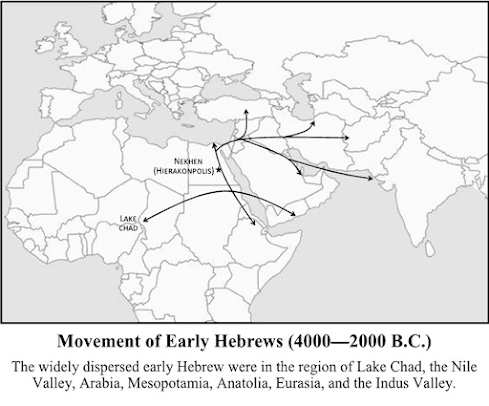Dr. Alice C. Linsley
The Hebrew regarded the mountain top as the spatial sacred center between heaven and earth, and high noon as the temporal sacred center, a time without shifting shadows. This belief is expressed in James 1:17 – “Every good and perfect gift is from above, coming down from the Father of the heavenly lights, who does not change like shifting shadows.” There were many Hebrew “high places” and the one that became associated with Judaism is Jerusalem.
High places served by Hebrew priests include Uruk (alt: Erech), Jericho, Heliopolis on the Nile, Nekhen and Karnak. Burnt offerings were made at the high places. This is reflected in the association of the term kar with charcoal and soot. The Turkish kara means "black." In Magyar, korom refers to soot, as does the Korean word kurim. In Dravidian, car means "sheltered together" and kari refers to a river. In Manding, kara means "to assemble." Among the Nilotic Luo, kar specifies a place with boundaries. In ancient Sumerian, é-kur refers to a mountain house, a pyramid, or an elevated temple. It is evident that kar refers to a rock sheltered or fortified site with a temple or shrine tended by priests.
High places are described as “mounds” in the Ancient Pyramid Texts (2400-2000 BC). One of those mounds was Nekhen, the oldest known site of Horite Hebrew worship. Archaeological discoveries there have confirmed the presence of Horite and Sethite Hebrew at Nekhen as early as 5100 years ago. The citizens brewed beer, made pottery, and built homes and public buildings using bundled reeds and large logs. They fashioned sacred objects of flint, gold, and malachite. Green malachite held special significance for the early Horite Hebrew. It was associated with Horus. The Egyptian Book of the Dead speaks of how the deceased will become a falcon "whose wings are of green stone" (chapter 77). The Pyramid Texts speak of Horus as the "Lord of the green stone" (Utterance 301). A leather pouch containing chunks of malachite was found among the grave goods at Tomb 39 in Nekhen, a city dedicated to Horus whose totem was the falcon.
Golden Horus as a falcon found at Nekhen.
Early hieroglyphic writing appears on some of the artifacts found at Nekhen. Archaeologists also found the earliest funerary complex in the land that would become known as Egypt, and the exquisite burial goods leave no doubt that this tomb belonged to one of the Upper Nile’s earliest kings.
Nekhen was a center for the worship of the High God and his Son HR. Votive offerings found at Nekhen were ten times larger than the mace heads and bowls found elsewhere, indicating the prestige of the Horus Temple. Royal priests at the Temple of Horus honored the High God, the High God’s son HR, and HR’s mother, Hathor.
An ivory Hathor comb with carved cow horns at the top was found in grave 66F at Nekhen. It dates to between 3650 and 3300 BC.
Related reading: Why Nekhen is Anthropologically Significant; Nekhen News Online; Another Look at Genesis 3:13-15; Horite and Sethite Mounds



Apiru?
ReplyDeleteThe words "Apiru" and "Habiru" are variants of the Ancient Akkadian word "Abru" which means priest. The early Hebrew (4000-2000 BC) were a ruler-priest caste. https://biblicalanthropology.blogspot.com/2022/05/the-hebrew-were-caste.html
ReplyDelete